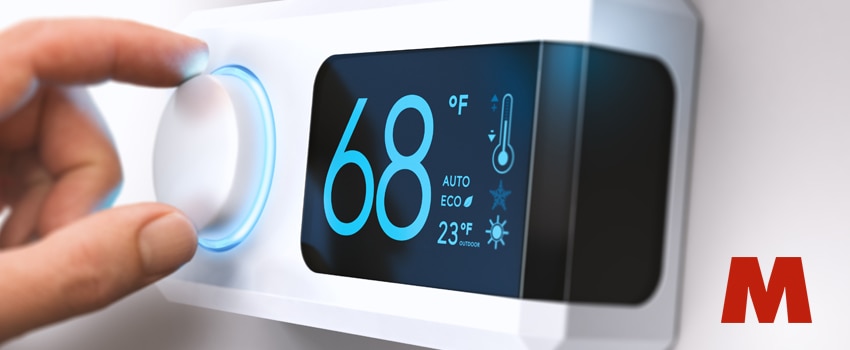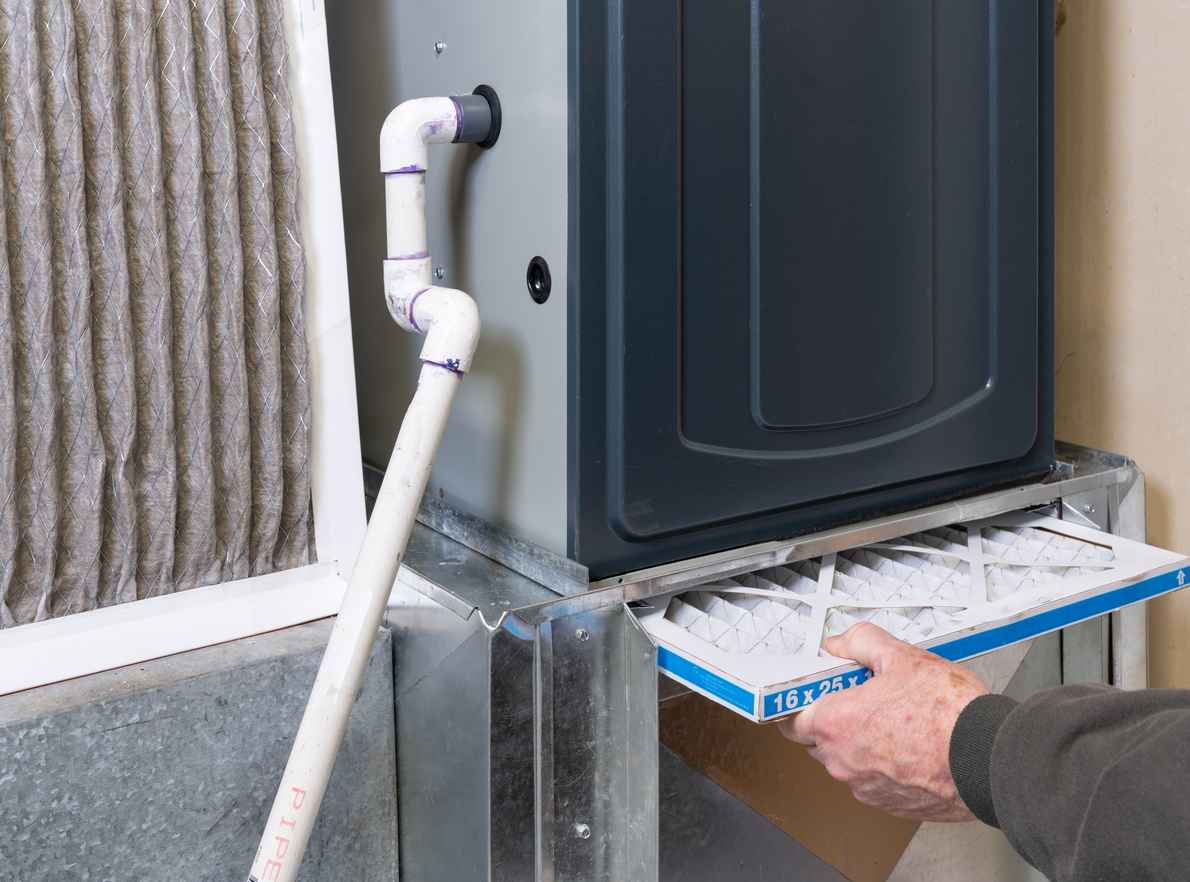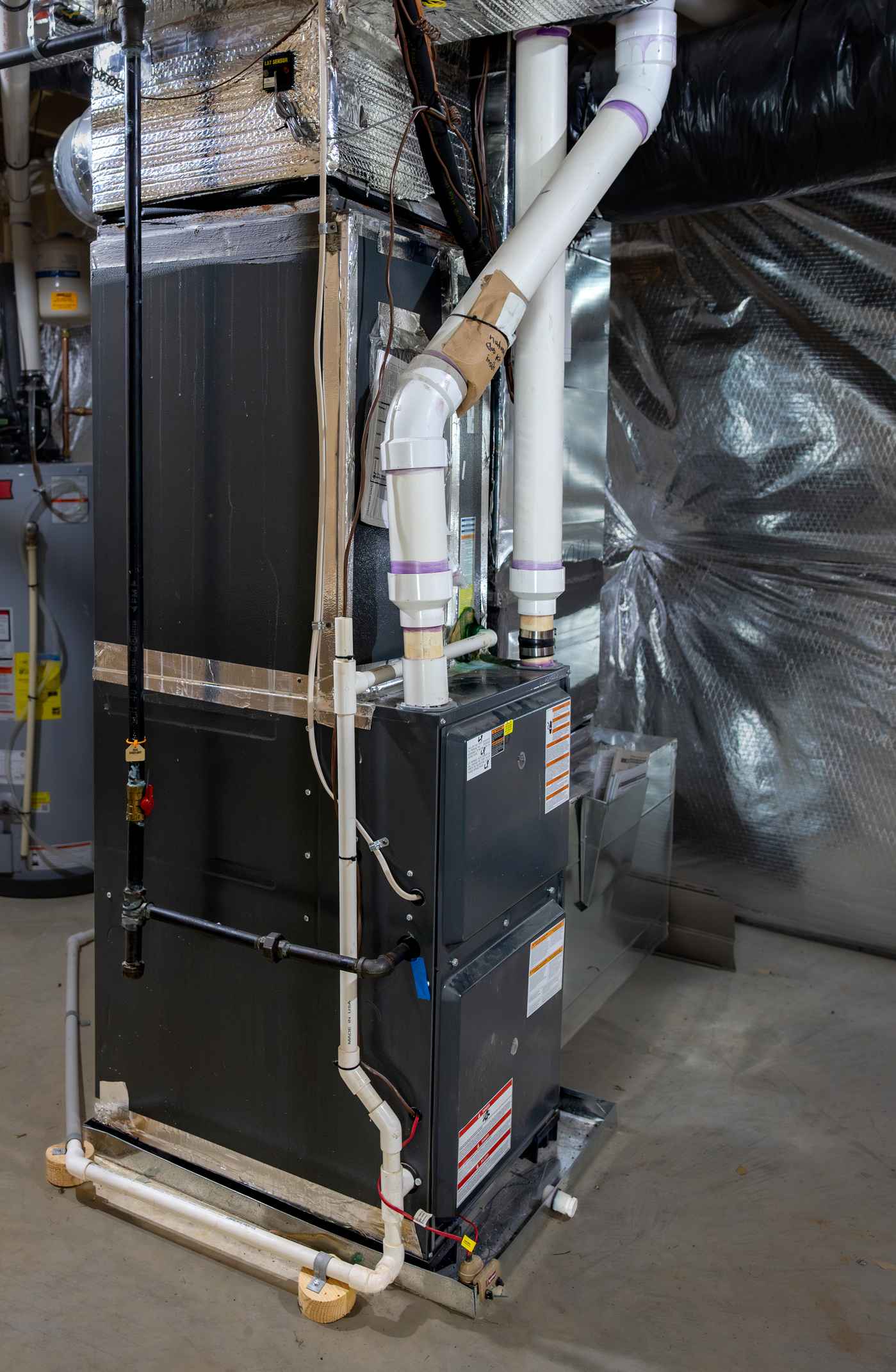4.8 Google Rating

Why You Should Install a Programmable Thermostat with Your New HVAC System
If you’re investing in a new HVAC system, adding a programmable thermostat is a smart choice. These advanced devices allow you to set specific temperature schedules, adjust settings remotely, and even track energy usage—all of which can help improve comfort and reduce energy bills. This post will explore the benefits of a programmable thermostat, how it enhances your HVAC system’s efficiency, and tips on choosing the right one for your Austin home.
What is a Programmable Thermostat?
A programmable thermostat allows you to set a schedule for heating and cooling, automatically adjusting temperatures based on your lifestyle. Unlike manual thermostats, which require constant adjustments, programmable models let you create temperature settings for different times of the day. For example, you can set the thermostat to reduce cooling during work hours and increase it shortly before you arrive home, ensuring comfort without wasting energy.
Benefits of a Programmable Thermostat
- Enhanced Energy Efficiency
Heating and cooling account for a large portion of household energy consumption. A programmable thermostat helps lower this by automatically adjusting temperatures based on your schedule. By reducing heating or cooling when it’s not needed, these devices can cut energy usage significantly, leading to lower utility bills. - Lower Utility Bills
Reducing energy usage directly translates to savings. The U.S. Department of Energy estimates that homeowners can save up to 10% per year on heating and cooling costs by lowering their thermostat 7-10 degrees Fahrenheit for eight hours a day. A programmable thermostat makes it easy to set these adjustments and forget about them, allowing you to enjoy consistent savings without sacrificing comfort. - Increased Comfort and Convenience
Programmable thermostats offer the convenience of setting temperatures to match your daily routine. Many models allow for multiple temperature settings throughout the day, so your home can be warm when you wake up, cool during the hottest part of the day, and comfortable when you return in the evening. This level of control makes it easy to create a cozy indoor environment while optimizing energy use. - Remote Access with Smart Thermostats
Many programmable thermostats now come with smart capabilities, allowing you to control them from your smartphone or other devices. This means you can adjust your thermostat remotely if your schedule changes, ensuring your home is comfortable when you arrive and saving energy when you’re away unexpectedly.
Types of Programmable Thermostats
There are various types of programmable thermostats to choose from, depending on your needs and preferences:
- Basic Programmable Thermostats: These models allow you to set a heating and cooling schedule for weekdays and weekends, typically with four periods per day (morning, daytime, evening, and night). They’re ideal if you have a consistent schedule and want a simple, budget-friendly option.
- Smart Thermostats: Smart thermostats go beyond simple programming, offering Wi-Fi connectivity and compatibility with smartphone apps. They provide remote control, track energy usage, and often include advanced features like learning your habits over time.
- Learning Thermostats: Some high-end smart thermostats come with learning capabilities, which means they “learn” your preferred temperature settings over time and adjust automatically. These models offer a more hands-off approach, making them ideal for homeowners who want maximum efficiency with minimal programming.
Choosing the Right Programmable Thermostat for Your Home
When selecting a programmable thermostat, consider the following factors:
- Compatibility with Your HVAC System
Not all thermostats are compatible with every HVAC system. Make sure the model you choose works with your specific system type, especially if you have a heat pump, zoned system, or other specialized setup. Consulting with an HVAC professional like McCullough can help ensure compatibility. - Scheduling Options
Choose a thermostat that matches your schedule. If you work a regular 9-to-5 job, a basic 5-2 or 7-day programmable thermostat may suit your needs. For more variable schedules, a smart thermostat with remote control might offer the flexibility you need. - Additional Features
Smart thermostats come with many extra features, including energy usage reports, humidity control, and integration with other smart home devices. Evaluate which features will benefit you most to avoid paying for extras you don’t need. - Budget
Basic programmable thermostats are affordable, with options available for around $50. Smart thermostats are more expensive but offer added convenience and energy tracking. While they may have a higher upfront cost, the energy savings they provide can make them a worthwhile investment.
Setting Up Your Programmable Thermostat for Maximum Savings
To get the most out of your programmable thermostat, follow these tips for optimal settings:
- Set Temperature Changes for When You’re Away: If you’re away during the day, set the thermostat to increase or decrease temperatures, depending on the season. Avoid large fluctuations, which can strain your system and reduce efficiency.
- Adjust for Sleep: Set the thermostat to maintain a cooler temperature in winter and a warmer one in summer during nighttime hours. Most people sleep comfortably in cooler temperatures, so lowering the heat at night can lead to savings.
- Consider Seasonal Adjustments: As seasons change, adjust your thermostat’s schedule to match the new weather patterns. Setting it a few degrees lower in winter or higher in summer can lead to additional savings.
Frequently Asked Questions
- How much can I save with a programmable thermostat?
You can save up to 10% on heating and cooling costs by setting the thermostat back 7-10 degrees for eight hours a day. This can lead to significant savings over time, especially with Austin’s extreme weather. - Are programmable thermostats easy to install?
Many programmable thermostats are designed for easy installation and can be done by most homeowners. However, if you’re upgrading to a smart thermostat or have a complex HVAC system, professional installation may be beneficial. - Will a programmable thermostat work with a heat pump?
Yes, but make sure the thermostat is specifically compatible with heat pumps, as they require different programming for efficient heating and cooling.
Conclusion: Make the Most of Your HVAC System with a Programmable Thermostat
A programmable thermostat is one of the most effective ways to increase your HVAC system’s efficiency and reduce energy costs. With options ranging from basic models to advanced smart thermostats, there’s a solution for every budget and lifestyle. McCullough Heating & Air Conditioning can help you choose the right thermostat for your home and provide expert installation to ensure it integrates seamlessly with your HVAC system. Reach out today to learn more about our programmable thermostat options and take control of your home’s comfort and energy use.
Recent News

The Hidden Costs of Ignoring HVAC Duct Leaks in Austin’s Humid Climate

What Makes McCullough Heating & Air Conditioning the Right Choice for Austin Heating Needs

Why Texas Homeowners Are Upgrading to Heat Pumps in 2026: Efficiency & Tax Credit Insights

Is Your Furnace Ready for a Central Texas Winter? Austin Homeowners Should Check This First

Don’t Get Spooked by Strange HVAC Noises This Halloween: Austin’s Guide to a Fright-Free, Cozy Home

Preparing Your Austin Home for the Switch from AC to Heat


